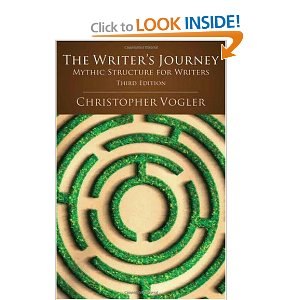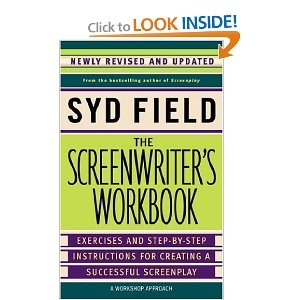There are only two things you need to do to become a better writer: study and write. The question is: are you studying and writing optimally? I wrote screenplays for Columbia and Paramount on instinct, and wrote hundreds of animation scripts the same way. But I’d never really “learned” how to write. I finally decided to get serious about my craft and read all the best-selling screenwriting books. I learned quite a bit. But one of the most important things I learned was that WHAT you read is only half of the journey. HOW to read is the other. Learn the three R's and become a better screenwriter...
♦
I want to start by saying something VERY important. What I am about to write may seem so simple as to be unimportant. But it is its simplicity that IS important. So read to the end before you judge.
Now I bet you’re wondering what the three R’s of screenwriting are. They’re the same ones you learned in school, only without the ‘rithmatic:
Reading, ‘Riting and Rereading.
Let me explain...
There are really only two things you need to do to become a better writer: study and write. Input and output. There’s nothing else to it. The question is: are you studying and writing optimally?
There are two kinds of input:
CREATIVE INPUT: watching movies & TV, playing video games, reading books & news, living life, talking to people, etc. All of these are fodder for your creative cannon.
INFORMATIONAL INPUT: reading books or blogs on writing, taking writing courses, learning on the job, etc. All of these teach you how to aim and fire your creative cannon.
The creative input is easy—you just do it.
The informational input is a little harder and a lot more important. On-the-job experience is the best way to learn how to write. But internships and apprenticeships are few and far between. And courses such as Robert McKee’s story seminar are an excellent way to learn if you can afford the $745 fee. But I’m a big believer in cutting to the chase. And in this case the chase is the data, and the data is in books.
THE FIRST VITAL STEP TO BECOMING A BETTER WRITER IS TO READ BOOKS ON WRITING.
Believe it or not, midway through my career I’d written screenplays for Columbia and Paramount, and hundreds of animation scripts, without any formal training on character and story structure. I hadn’t even read a book on screenwriting. I just did it instinctively. And luckily for me it worked...to a point.
I finally decided to get serious about my craft and started reading. I read all the best-selling screenwriting books and learned quite a bit. Then I discovered that WHAT to read is only half of it. HOW to read is the other.
Let me share with you what I discovered about HOW to read screenwriting books:
1. Read them more than once.
If you’ve already started reading screenwriting books you’ve probably read McKee’s “Story”. Even to a professional like me, “Story” is a bit overwhelming. There is SO much data in it that it feels impossible to get it all, especially when you sit down to write your script and try to remember everything you read. The answer is extremely simple, though not necessarily that easy to do. The secret is to read it more than once. Truthfully, the more times the better.
The first time you read a textbook it’s all new so all the data tends to float in your mind as individual data and can thus be overwhelming. But the second time you read a book you have a general understanding of the data, and can begin to associate information and evaluate its importance. It’s hard to confront reading a 450 page book several times, but if you want the end result of fully understanding it that’s exactly what you have to do.
And consider this: When you know you’re going to read a book again you don’t have to stress so much the first time you read it. Rather than worry about remembering and understanding it all, you can just relax and read it for pleasure.
2. Evaluate the important data.
There are hundreds if not thousands of data in any textbook. You will drown in all of it if you don’t evaluate which are important and which are not. When I read screenwriting books I highlight the data that I feel is important, then I go back through and type all the highlights into a Word document. For example, I turned McKee’s 450 pages of “Story” into 28 pages of important data. Now I can virtually reread his book in less than one-tenth the time.
There are two benefits to evaluating data for its importance. First, you know what’s important and can therefore emphasize its use. Second, you can jettison the unimportant data that was otherwise stuffing your skull. Putting emphasis on unimportant data can really screw you up.
3. Read them before and after you write.
There is another step in the HOW of reading books on writing that makes it even easier to assimilate and use the information. Your mind is like a computer; you have your hard drive (long-term memory) and RAM (short-term memory). After you’ve read a book, whatever data you understood is stored in your zillion terabyte “gray matter” hard drive. But a week later there is nothing left in RAM. So before I start writing a screenplay I reread “Story”, and maybe Christopher Vogler’s “The Writer’s Journey” (or my condensed versions). This puts the data back in “RAM” again. Then I write. I find that this helps me generate lots of new ideas and helps me focus on the important points of my structure, character, theme, etc. Then, when I’ve finished my first draft, I read the books (or notes) again! Why? Because now it is my script that is in “RAM”, so when I reread the books I am immediately able to associate the data with my characters, theme, structure, etc., and get still more ideas of how to improve them.
There are two key study data here I am using: 1) The more you go through the data (reading) the better you understand and can apply it, and 2) the fresher the data is in your mind the more effectively you are able to use it.
If you really want to do this right you can read the book(s), write your outline, reread, rewrite your outline, reread, write your script, reread, then revise you script. If this sounds ridiculous to you it’s because we are all a bit lazy. I confess that I don’t have the discipline to do this. But I am totally certain that if I did my writing would be better.
4. Boil the data down to a paradigm that works best for YOU.
After I read the best-selling screenwriting books, as noted, I highlighted and extracted the key data. But then I did one more thing: I boiled the structure data down to a relatively simple paradigm that allowed me to see what a good screenplay was made of. I took what I felt was the best data from each book and blended it all into something that felt right for me. Inciting incident, midpoint, plot points, pinches, crises, climaxes, low points, theme, major dramatic question, twelve steps, etc. I included the major points I needed to clearly see the structure of a classic screenplay. This is not a formula, it’s a form. It’s like the human skeleton. It tells you where to put the organs and drape the skin. And we all know how different humans can be.
THE SECOND VITAL STEP TO BECOMING A BETTER WRITER IS...TO WRITE.
There isn’t much to say about this point. But I do have one suggestion. It’s based on the same principle as reading books over and over to get a better understanding of the data. Rather than spend a lot of time trying to perfect one screenplay, write more screenplays. Think about it...if you take three years to write a screenplay, at the end of those three years you have the experience of writing one screenplay. But if you write two screenplays a year for those three years you have the experience of writing six screenplays. You’ll learn more by going through the entire process of conceiving, developing, writing and rewriting a script six times than doing it just once. And my personal experience is that you’ll be a better writer after six scripts than just one.
If you haven’t already read the best screenwriting books let me give you a short booklist. There are more books than these, but reading these will be an excellent start. After you’ve read these I urge you to research and find more books. The more the better. After a while you may find a lot of the information redundant, but even learning just one new datum for $15 is quite a bargain.
Here are my favorites:
And if you’re interested in television animation writing, I would be remiss if I didn’t suggest my book, HOW TO WRITE FOR ANIMATION.













